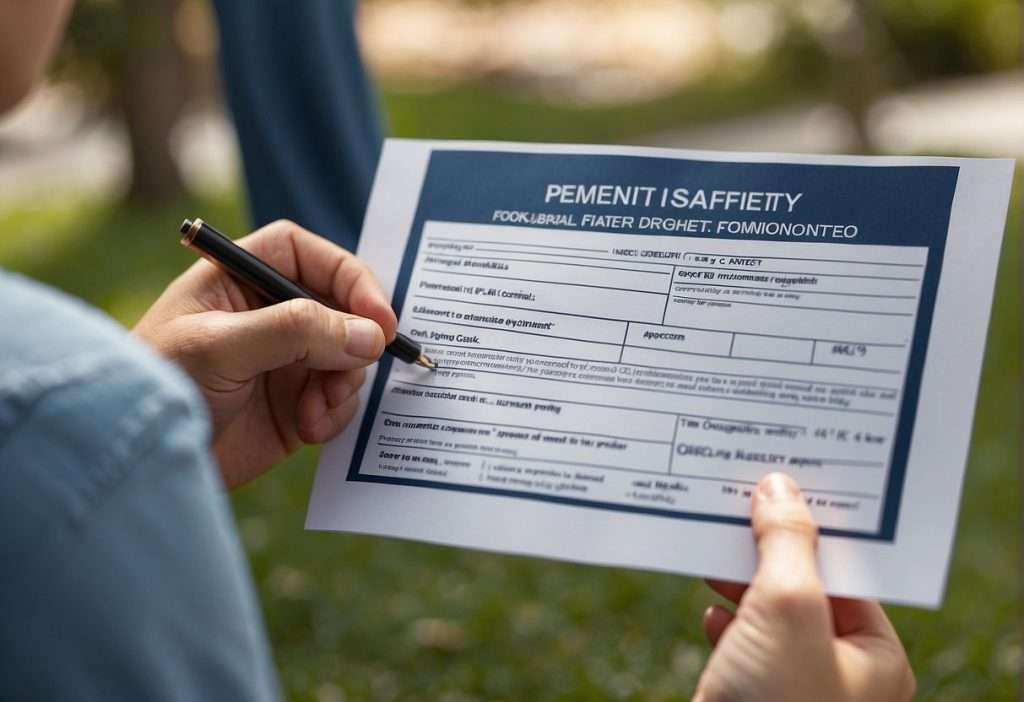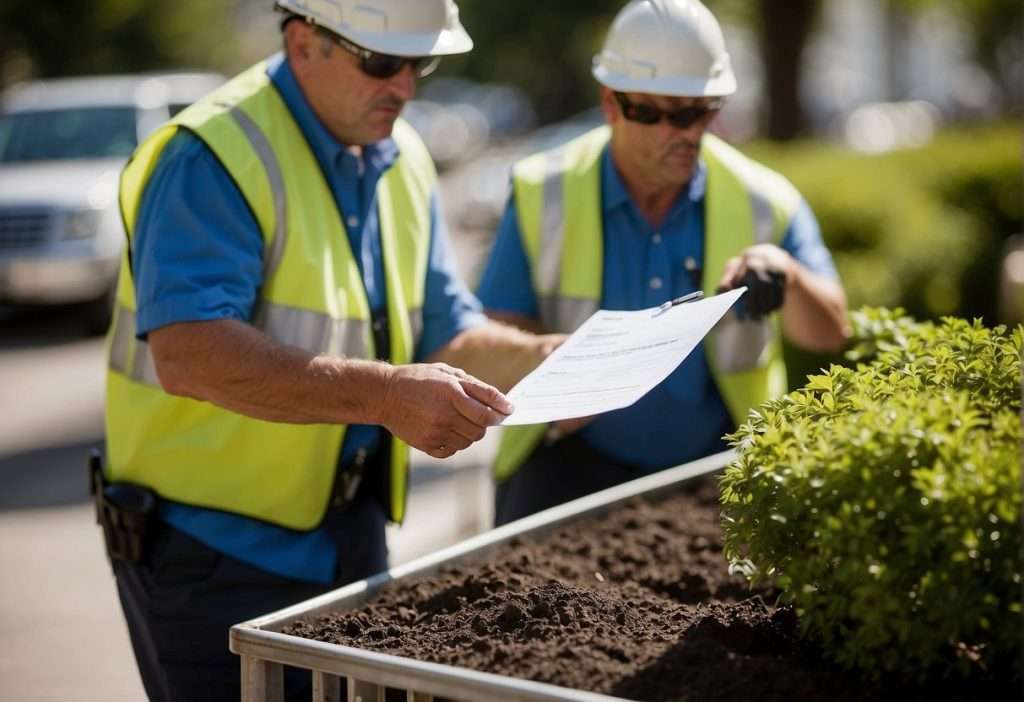When you decide to alter the landscape around your home, it’s essential to consider whether your project requires official permission. Many homeowners aren’t aware that certain types of landscaping work can be subject to local regulations and building codes. Whether or not you need a permit often depends on the scope and scale of the work you intend to do. Small projects like planting flowers or a vegetable garden typically don’t require a permit. However, more extensive work such as installing a new patio, building a fence, or reshaping the land with grading may indeed necessitate obtaining a permit from local authorities.

Understanding the permitting process is crucial to ensure that your landscaping project is compliant with municipal requirements and avoids legal complications. Permits are a means for local governments to oversee land use and development, ensuring that changes to properties align with zoning laws, construction standards, and environmental regulations. Before you begin, check with your local planning department or zoning office: They can provide you with the specifics for your area. Factors like the type of changes, the location of the work within your property, and its potential impact on the environment or neighborhood will influence the necessity of a permit.
Understanding Landscaping Permits
When you plan to alter your outdoor space, it’s important to understand if your project needs a landscaping permit. This permit is a legal document that may be required to ensure your landscaping project adheres to local regulations.
What is a Landscaping Permit?
A landscaping permit is an official authorization issued by a local government or regulatory body that allows you to carry out certain landscaping activities. It’s a way for the authorities to oversee and regulate changes to land use, aesthetics, and environmental impact. Without this permit, you might be at risk of legal action, fines, or being required to undo the work you’ve completed.
When is a Landscaping Permit Required?
- Large Scale Changes: You usually need a permit for substantial transformations such as grading, removing significant trees, or altering drainage patterns.
- Structures: Erecting structures like gazebos, decks, or retaining walls often necessitates a permit.
- Utilities: Modifying or installing irrigation systems may also require a permit, particularly if they interact with public utility systems.
| Landscaping Activity | Permit Required |
|---|---|
| Tree Removal | Yes/No* |
| New Structures | Yes |
| Major Grading | Yes |
| Minor Planting | No |
*Varies based on local ordinances.
Differences Between Landscaping and Building Permits
- Purpose: While landscaping permits generally cover projects that change the exterior property’s landform or ecosystem, building permits are for construction, renovation, or significant alteration of structures.
- Scope: Building permits are more comprehensive and are required for structural safety, whereas landscaping permits may focus more on preserving local flora, fauna, and adherence to zoning laws.
- Inspections: Building projects usually demand more frequent and rigorous inspections compared to landscaping projects.
Permit Requirements for Specific Landscaping Projects
When undertaking landscaping projects, it’s essential to understand that certain types of work require permits to ensure compliance with local zoning, building codes, and environmental regulations.
Permit Considerations for Fences and Walls
To erect a fence or retaining wall on your property, you will likely need a permit, especially if it exceeds a certain height, typically over 6 feet. Check your local building codes for specifications such as materials, design, and distance from property lines.
- Fences: Permit generally required for construction over a specific height.
- Retaining Walls: Often need engineering reports and permits for safety.
Deck and Patio Permit Requirements
Any construction of a deck or patio may require a permit, especially if it involves structural changes to your home or the landscape. The size, height, and attachment to your residence influence whether a permit is needed.
- Deck: A permit is needed if it’s certain dimensions or height above ground.
- Patio: Permit may be required, depending on size and alteration to the landscape.
Tree Removal and Environmental Considerations
Permits for tree removal depend on your municipality’s regulations, which may consider tree size, species, and location. Protected trees or ones in conservation areas often have strict removal criteria.
- Tree Removal: Check local environmental laws—permits often required for specific tree sizes and species.
Water Features and Swimming Pool Regulations
Installing significant water features, such as a swimming pool or large pond, requires permits to ensure safe construction and that local water runoff and ecological standards are upheld.
- Swimming Pool: Nearly always requires a permit; safety barriers are mandatory.
- Irrigation System: Permit requirements vary; check for backflow prevention regulations.
The Permit Process
When engaging in landscaping, obtaining a permit might be necessary to ensure your project complies with local regulations. This process involves a series of steps, the engagement of professionals, and adherence to inspection protocols.
Steps to Obtain a Landscaping Permit
To secure a landscaping permit, you should follow these steps:
- Research: Determine the specific requirements of your local municipality for landscaping projects.
- Documentation: Gather necessary documents, which may include a detailed project plan designed by a landscape architect.
- Application: Complete the permit application form provided by your local government.
- Submission: Submit the application along with any required fees and supporting documents to the appropriate office.
- Review Process: Await the review of your application, during which local officials may request additional information or modifications.
Role of Contractors in Permit Acquisition
Your contractor plays a vital role in the permit process:
- Expertise: A licensed contractor can provide insights into the complexities of local building codes and landscaping regulations.
- Preparation: They can assist with preparing accurate and detailed construction plans.
- Submission: Often, contractors will manage the submission of your permit application and any necessary documentation.
- Communication: They act as a liaison between you and the permitting office, handling any queries or concerns that arise.
Inspections and Ensuring Compliance
Inspections are integral to the permit process, confirming that your project adheres to codes and regulations:
- Initial Inspection: An inspector might visit your property before work begins to verify that the proposed landscaping aligns with what’s outlined in your permit.
- Ongoing Inspections: During the construction phase, inspectors may conduct additional visits to ensure each phase of the project remains compliant.
- Final Inspection: Upon project completion, a final inspection is typically required to ensure the work meets all agreed-upon specifications and local codes.
Keeping meticulous records and remaining communicative with your contractor and local inspectors guarantees a smoother permit process and project completion.
Legal and Safety Considerations

When undertaking landscaping projects, you must be aware of local laws and adhere to safety protocols to prevent legal infractions and ensure a safe working environment.
Navigating Local Ordinances and Regulations
Your local government sets specific ordinances and regulations that dictate what you can and cannot do in landscaping. These may include:
- Zoning Laws: Determine the types of projects permissible in your area.
- Permit Requirements: List what landscaping work requires prior approval.
To avoid legal issues, check with your city or county’s planning department for information on the necessary permits.
Common Legal and Safety Risks in Landscaping
Landscaping involves risks that can lead to accidents or legal complications, such as:
- Physical Injuries: Use of equipment without proper safety measures.
- Property Damage: Caused by machines or falling trees during a project.
It is crucial to recognize these hazards and employ safety practices, like using personal protective equipment (PPE), to minimize risks.
Insurance and Liability in Landscaping Projects
Insurance is vital to protect against accidents and injuries that could occur. Make sure your policy covers:
- Liability Insurance: Protects against claims if third parties are injured.
- Workers’ Compensation: Offers benefits to employees injured on the job.
Staying current with these considerations can safeguard your finances and foster a safe, compliant work setting for your landscaping initiatives.
Potential Penalties and Compliance

When engaging in landscaping activities, you must understand the legal implications of non-compliance. The associated penalties can range from fines to legal action, and affect relationships with neighbors.
Consequences of Non-Compliance
Fines:
- Minor Violations: Often incurs small fines, typically in the range of $50-$200.
- Major Violations: Can escalate to thousands of dollars, depending on the severity and location.
repeated violations could lead to:
- Increase in the fine amounts.
- Mandatory corrective action, which could involve removing or altering the landscaping at your expense.
Accidents or damage:
- If your landscaping causes damage to public utilities or neighboring properties, you may be responsible for the cost of repairs.
- Any accident arising from unpermitted work could result in liability issues for you.
Dispute Resolution and Neighbor Relations
Communication with neighbors:
- Engaging in dialogue with your neighbors before landscaping can prevent disputes.
- If neighbors are affected by your project, they might file complaints leading to inspections and fines.
Legal action:
- Neighbors can seek legal intervention if they believe your landscaping infringes on their property rights or causes damage.
- Courts can order remedial actions and impose penalties for violations.
To navigate these issues, it is imperative to secure the necessary permits and adhere strictly to local regulations.
Additional Considerations for Homeowners

When embarking on a landscaping project, you as a homeowner need to consider regulations and the potential impact on your property value. Ensuring you adhere to permit requirements is crucial, whether you’re taking on the project yourself or hiring a professional.
Do-It-Yourself Projects and Permits
If you decide to handle your landscaping project, you must check local ordinances to determine if a permit is needed. Essentially:
- Small-scale projects like planting flowers or a garden usually do not require a permit.
- Major changes involving grading, structural installations, or significant alterations often do need official approval.
Here’s a brief outline:
| Task | Likely Permit Required? |
|---|---|
| Planting a small garden | No |
| Building a retaining wall | Yes |
| Installing a fence | Varies by locality |
| Major tree removal | Often yes |
Increasing Property Value Through Compliant Landscaping
Professional landscaping can enhance your property’s appeal and value. However, compliance with local regulations is essential for long-term benefits. Consider the following:
- A well-executed, compliant landscaping project can increase property value by up to 15%.
- Non-permitted work can lead to fines and require costly modifications to meet standards.
Remember:
- Research: Understand your local zoning laws and community guidelines.
- Professional assessment: Hiring a landscaping professional can offer insights into maximizing value while ensuring compliance.
Advanced Landscaping Considerations

When undertaking advanced landscaping projects, you’ll encounter technical requirements and the need for careful planning. Navigating the permit process and crafting a coherent vision are essential steps for creating your personal oasis.
Technical Aspects of Landscaping Permits
To initiate any advanced landscaping, you must understand the technical aspects of landscaping permits. Depending on your location, these may involve:
- Electrical work: If you plan to install lighting or power features, electrical permits are typically required to ensure the work meets safety standards.
- Plumbing and Irrigation: Installing an irrigation system often necessitates a permit, as it connects to the public water supply and may affect your property’s drainage.
- Drainage: Modifications to your land’s grade or the installation of new drainage systems must comply with local regulations to prevent adverse effects on your property and neighboring areas.
For each of these elements, ensure you consult with local authorities to obtain the necessary permits before proceeding.
Vision and Planning for a Landscaped Oasis
Crafting the vision for your landscaped oasis involves detailed planning and design:
- Vision:
- Define the aesthetic and functional goals for your space.
- Consider how features like plants, structures, and water elements will coexist.
- Planning:
- Map out the placement of all features, keeping in mind the underlying systems such as irrigation and electrical.
- Account for the long-term growth and maintenance of your landscaping.
By addressing these considerations with thoroughness and clarity, you ensure that your landscaped space not only fulfills technical requirements but also achieves your desired outcome of a tranquil and functional oasis.


